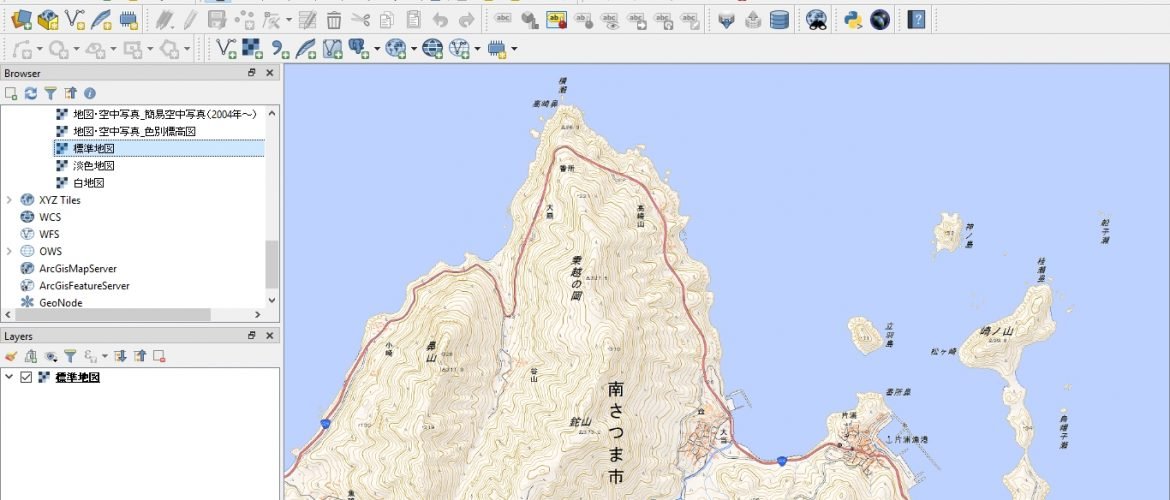
- Mapublisher export georeferenced image software#
- Mapublisher export georeferenced image code#
- Mapublisher export georeferenced image professional#
The World Heritage List is not just beautiful structures and natural wonders, it is a recognition of efforts of communities and countries, coming together to preserve irreplaceable heritage. There are 1092 inscribed properties to the list, that are divided into Natural, Cultural and Mixed categories some sites are marked as World Heritage in Danger. The World Heritage List is a collection of inscribed properties of Outstanding Universal Value according to the 1972 UNESCO convention concerning the ‘Protection of World Culture and Natural Heritage’. The data set used to conduct this research was downloaded from UNESCO World heritage Center website. It is often the language most used for web-based application, especially for 2D and 3D imaging application.
Mapublisher export georeferenced image code#
Python is a high-level multi-purpose programming language which is easy to read, code and run. QGIS and Blender, both are Python-based programs. The community is driven by peers who write codes for specific functions and expand the already existing functions. This program is largely supported by creative experts in the field, who are constantly experimenting, improvising and improving Blender through regular add-ons and developments.
Mapublisher export georeferenced image software#
This software supports almost all 3D manipulation modeling, rigging, animation, simulation, rendering, composing and motion tracking.
Mapublisher export georeferenced image professional#
QGIS is supported by a vast and continuously growing community of users and coders of python extension that are discovering and experimenting with new and creative ways to manipulate data.īlender is a professional 3D creation suite, that is also open source, and available on Windows, and MacOs, and Linux systems. This software is a complete GIS system to manipulate spatial information to visualize, manage, edit, analyze, plot and compose as a map. QGIS is an open source professional GIS application available on Windows, MacOs, Linux and Unix operating systems. It is a study to push the boundaries of a conventional 3D model, where the plotting of ‘point’ shapefile will be a key aspect in data visualization, by importing a WHS shapefile into Blender to create an exportable 3D model. There will be a creative allowance, in organizing and manipulation of data. The case study will be a systematic study of using pre-existing data of UNESCO World Heritage Sites (WHS) to plot, manipulate, organize, visualize and export a 3D model. The research project will examine the possibilities of geospatial data manipulation and data visualization as a 3D model. This research is a proof of concept of integrating GIS and 3D modeling software - QGIS and Blender. Technical innovations have allowed people to push the boundaries of a GIS map, especially 3D modeling. Once I got the two images figured out and saved properly my end user sent me a whole bunch more! Ain't that how it always works?From QGIS to Blender: Visualizing and Creating Georeferenced 3D modelsįor years GIS has been popular as a geo-spatial tool kit for scientists and researchers to map, organize, and analyze data. Apparently all I need to do was bring the image into ArcMAP, georeference it, and then just use the "Save Georeferencing" option in the drop down menu. One of the ArcGIS savvy guys was able to get me straightened out. Thanks for the suggestions, Luke! I tried them all but I was still having issues. rrd files to hold the reduced resolution overviews (pyramids), while the new library saves them to a. ArcGIS uses a new raster library "under the hood".


The different associated files are nothing to worry about. Alternatively, set NoData to 0 when exporting and your tif will be saved as 8 bit and should display properly.

To display it properly, build statistics or change/remove stretch in the layer properties->symbology tab. If so, your output raster was saved as a 16bit tif. If so, did you leave the No Data value at its default of 256? Did you georeference then use the Rectify.


 0 kommentar(er)
0 kommentar(er)
